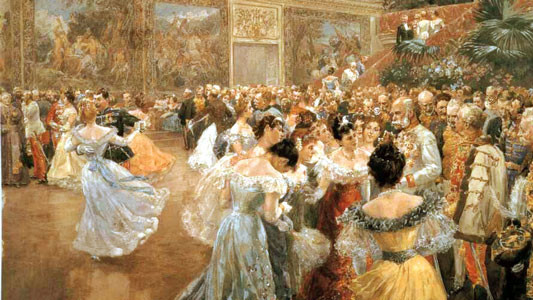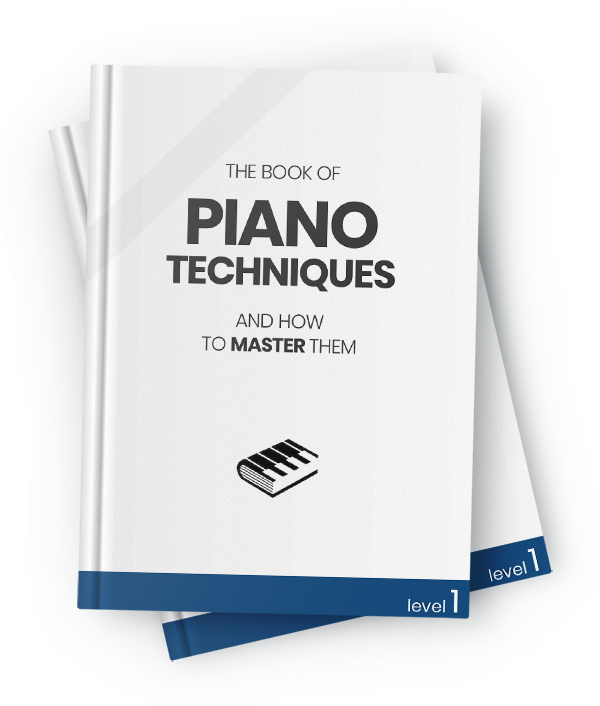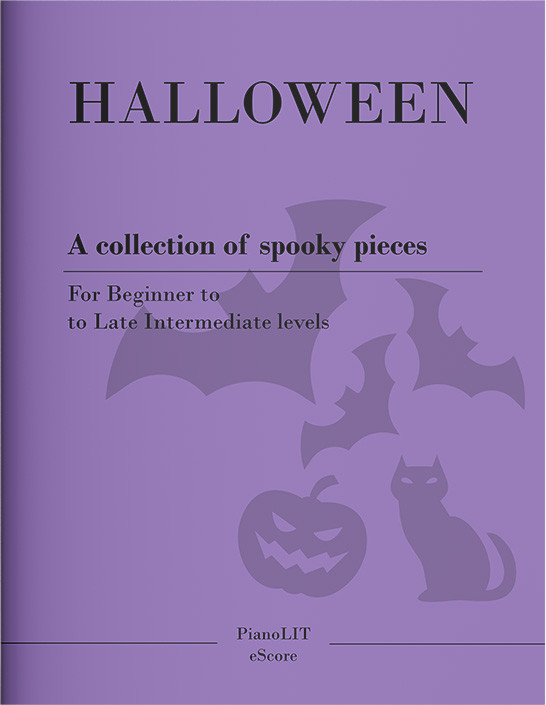Save me the waltz
A deep dive into one of the most famous musical genres of all, the waltz. Based on a dance with the same name, waltzes are deeply rooted in western culture with some celebrated pop examples.
Aug 31, 2019 • 11 min read
9733

Want a heads up when a new story comes out?
When we think of waltzes, probably the first thing that may come to mind is a large Viennese ballroom filled with well-dressed couples dancing the three beats dance symbol of the 19th-century high class élite. A common definition of the waltz is:
A ballroom dance in 3/4 time with strong accent on the first beat and a basic pattern of step-step-close
But the waltz is much more than this. It expanded throughout the years developing in an intricated and diversified musical genre chosen by notorious composers to express specific emotions.
Origin
The origin of the musical genre is the homonym dance, popular in the Romantic era and native from central Europe. It's a noble dance that emerged from the 16th-century lower-class peasant culture of Austria, Germany, and Bavaria, characterized by constant rotating motion. By the late 1700s it branched away from the dance to become a musical genre of its own, keeping the same 3/4 rhythm, meant to be listened to and not danced.
Musicians and the composition of dances
A broad knowledge of theatrical and ballroom dances was considered essential for composers and performers alike for centuries, as they were often called upon, both professionally and informally within their social circle, to provide music for dancing. The music of each dance type had its own tempo, associated melodic gestures and patterns, much of which was not notated in the score but part of its performance practice. To effectively compose and perform dance music one had to understand the musical intricacies of the dance in question. As Kinberg writes in his treatise "The art of strict musical composition":
Every beginner who wants to become well-grounded in composition is advised to become familiar with the disposition of all types of [dances]... If he has no skills in these character pieces, it is impossible to give a definite character to the piece.
For Bach, Mozart and Chopin, dance was part of their compositional pedagogy. Leopold Mozart often required Nannerl and Wolfgang to perform and compose minuets as elementary music exercises while Chopin's earliest works were polonaises, a Polish social dance.
Being able to improvise on tunes known to the large public was a useful ability back then as it is nowadays. If you are a musician, you are probably asked by friends and family to play that "famous tune"... Well, for the 18th-century professional musician, the "famous tunes" were the popular dances at the time. There are many accounts of composers improvising dance music at social gatherings. One of the most interesting account of this type come from a travel diary, regarding the extraordinary ability of the composer Hummel:
"Gallant and accommodating as he always was towards the ladies, he seated himself at the piano and played the desired waltzes, at which point the young people in the next room began to dance. I and some of the other artists present gathered around the piano, our hats in our hands, and listened. No sooner had Hummel noticed this new audience than he began to improvise freely, holding, however, to the steady waltz rhythm in order not to disturb the dancers."
Development
From its origin as a dance, the waltz developed throughout the years expanding into different categories. We choose to highlight two in particular, the waltzes composed for mere listening and the waltzes composed for opera and ballet.
Waltzes for listening
If composers create waltzes only for listening, the metric structure and the particular movements a dancer would make become components of the music itself. These defining characteristics, mixed with the natural freedom of the genre, generate an excellent ground for creativity.
Let's start this exploration with Chopin's compositions. The Polish composer had a great talent for musical dances in general, polonaises, mazurkas, and waltzes nonetheless. From those published during his lifetime and the subsequent posthumous publications, some are accessible by pianists of moderate capabilities, but the more difficult of them require an advanced technique.
We have a gift for you! Get the original manuscript signed by Chopin of his Waltz, op.64 no.1 in D flat Major. Hit the button on the lower right-hand corner of the page to start your download
After Chopin, Schubert's waltzes are of great consideration. Franz Schubert wrote about a hundred waltzes for piano solo. Particularly well known among these are two named collections, the 34 Valses Sentimentales (Op. 50, D. 779) and the 12 Valses Nobles (Op. 77, D. 969). But probably the most famous is the melodic Waltz in B minor Op. 18 No. 6 D 145.
Brahms had a certain fascination with waltzes. It's well-known his admiration for Johann Strauss, the incomparable composer of the sparkling waltzes for which Vienna is famous. Brahms often declared that he would have given much to have been the composer of Strauss’s Blue Danube waltz. It is also related that the wife of Johann Strauss once asked Brahms for his autograph. He immediately complied with her request, writing the opening measure of the Blue Danube waltz, and putting under it, “not, alas, by Johannes Brahms.” Originally composed in 1865 for piano duet (one piano, four hands), Brahms's 16 Waltzes, Op. 39, are charming short pieces.
Another composer naturally drawn to the waltz genre is Shostakovitch, who composed waltzes for piano solo and for orchestra. Of special note are the Waltz No.2 from the Suite for Variety Orchestra made famous by the soundtrack to Stanley Kubrick's Eyes Wide Shut, and the piano composition "Lyric Waltz" from "Dances of the Dolls".
We cannot end this paragraph without mentioning the 'King of Waltz' and precisely Johann Strauss, his Blue Danube Waltz has become one of the most consistently popular pieces of music in the classical repertoire.
Waltzes in dramatic composition
In Opera and ballet, two forms of cooperation between music and narrative drama, we find an intimate connection between the composer use of the waltz and the feminine characters.
The waltz allowed partners to be close and place their arms around one another as they spun around the floor. Conservative critics were outraged and considered the dance to be too tactile, while it was loved by the younger members of society. In 1833 a British manual of good manners recommended only married women should dance it, as it was too immoral for the unwed. The outrage was due mostly to its effect on women who were given many restrictions: with whom they might waltz, under which circumstances and at what age. Composers like Puccini, Verdi and Tchaikovsky used the waltz's contradictory meanings of individual pleasure and social disapproval to represent their female characters and their development throughout the drama.
Let's look at the first examples, the "Sleeping beauty" waltz. This waltz takes place in Act I, the day of Aurora’s 16th birthday and represents her introduction into a hopeful new world, a world in which she is an adult and leaves the child that she was behind. It became very popular because long excerpts from Tchaikovsky's score were included in the Walt Disney cartoon version produced in 1959.
Moving to the opera genre, in La Bohème, Puccini turns to the waltz style in the famous aria “Quando me’n vo”, where the vivacious Musetta attempts to win back the attention of her former lover Marcello by confidently showcasing her charm in a bustling Parisian café.
Here is another example of a waltz being used to represent the love of a young couple from the perspective of the female character. This is Juliet's Waltz from Gounod's Romeo and Juliet.
•••
The popularity of the waltz persisted beyond the original Viennese era. Indeed it is hard to think of any other dance that has been as popular as the waltz and has had so great an influence in music. Waltzes can be found anywhere, from the concert halls to the opera stages, from the Jazz bars to the home screens in TV commercials and movies.

- The title of this post is a tribute to Zelda Fitzgerald book with the same name 'Save me the waltz'. https://www.amazon.com/Save-Me-Waltz-Zelda-Fitzgerald/dp/1491583215
- Decorum of the Minuet, Delirium of the Waltz by Eric McKee. https://www.amazon.com/Decorum-Minuet-Delirium-Waltz-Interpretation/dp/025335692X
- Revolving Embrace: The Waltz as Sex, Steps, and Sound by Sevin H. Yaraman. https://www.amazon.com/Revolving-Embrace-Waltz-Monographs-Musicology/dp/1576470431
- Maria Pilar Queralt del Hierro. (2017). The Elegant Waltz Was Once Vienna’s Forbidden Dance. National Geographic. https://www.nationalgeographic.com/archaeology-and-history/magazine/2017/11-12/history-waltz-dance-vienna/


